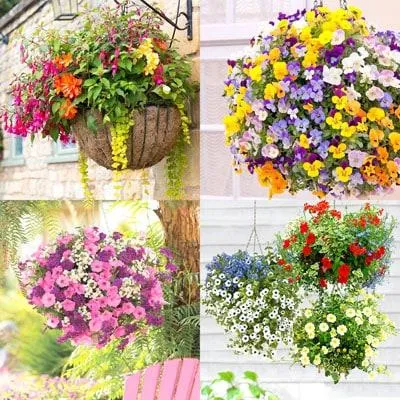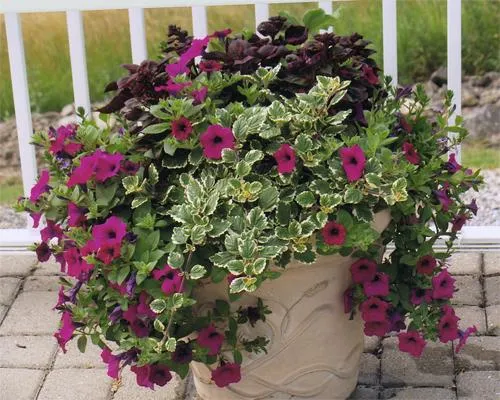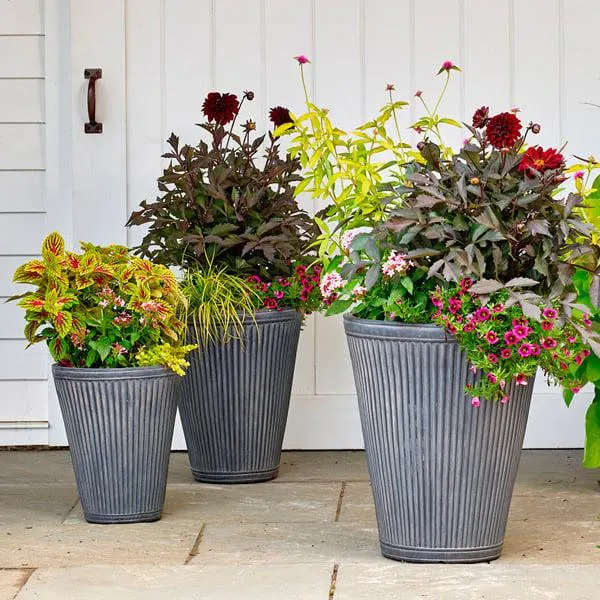The Best Plants for Full Sun Cascades
If you’ve been searching for “full sun cascading plants,” you’ve come to the right place. As an avid gardener, I’ve had plenty of experience choosing plants that thrive when hanging over edges or spilling down from containers in full sun situations. In this article, I’ll outline some top options to consider based on your climate and design goals.
What Conditions Do Cascading Plants Prefer?
Most cascading plants enjoy hot, sunny spots getting at least 6 hours of direct sunlight per day. They also tend to thrive in well-draining soil. From my experience, it’s best to select varieties suited to your Hardiness Zone. Plants native to drier, warmer climates like Zones 9-11 will tolerate intense sun better than those from cool, moist regions.
At the same time, maintaining adequate moisture is crucial – hanging baskets and walls often dry out faster than in-ground beds. You may need to water cascading containers daily in summer. I also recommend incorporating organic matter like compost to improve soil structure and retention. A slight breeze can benefit cascading plants too by reducing chances of sun scald and fungal issues.
Top Cascading Plant Choices
Here are some proven performers to consider for your cascades:
- Petunias – With their vibrant blooms from spring until frost, petunias are beloved for sunny containers. Varieties like ‘Storm Purple’ produce cascades of color. deadhead regularly to encourage rebloom.
- Vinca – Commonly called periwinkle, vinca vines tolerate heat and adapt well to hanging baskets. Try ‘Big Leaf’ for large foliage. Pinch back periodically for bushier growth.
- Bacopa – This trailing groundcover spreads rapidly. ‘Snowtopia’ features white flowers all season. Bacopa flourishes in full sun with consistent moisture.
- Lantana – A hummingbird magnet! Select heat-tolerant types like ‘Bandana’ in shades of yellow, orange, and red. Prune to shape. Watch for powdery mildew in damp conditions.
- Million Bells – Calibrachoa offers color from spring to fall. Dwarf varieties such as ‘MiniFamous Blue’ create cascades of miniature blooms. Deadhead periodically for nonstop flowers.
- Ivy Geranium – Zonal geraniums like ‘Royal Manners Purple’ stay compact and produce scarlet flowers for months. Overwinter indoors in cold climates.
From my experience, combining a few of these high-performing vines, groundcovers, and trailers ensures season-long visual appeal in cascading containers. You can’t go wrong with a mix including petunias, vinca, and calibrachoa for vibrant colors! Specify plants suited to your climate and water needs.

Design Tips for Cascades
To make the most of your cascading plants, consider these tips:
Use tall planters, hanging baskets, or retaining walls to give vines space to spill over elegantly. For a stunning staircase effect, tier several containers one above the other.
Experiment with trailing ivy, licorinthus, or lobelia edging planters – they soften the transition from pot rim to cascade.
Incorporate sturdy supports like meshes, obelisks, or stakes for vining plants to climb. Make sure they’re securely fastened in place before adding soil and plants.
For a lush tropical look, kind of layer different textures – try frilly petunias alongside broad vinca leaves combined with dainty calibrachoa flowers.

Locate cascades in high-traffic areas like walkways or patios so others can enjoy the beauty up close. Just be sure drainage is excellent to avoid water damage below.
Consider lighting cascades from above with path lights or solar lamps after dusk. The display is just as stunning by night!
Hopefully, these planting ideas and design tips will help you create gorgeous cascades of greenery or seasonal color to take advantage of your full sun conditions! Let me know if you have any other questions.
Full Sun Cascading Plants
| Plant | Flowers | Foliage | Height | Care Level |
|---|---|---|---|---|
| Petunias | Bright colorful blooms | Green leaves | 6-12 inches | Easy |
| Ivy Geranium | Clustered pink/red/white | Green leaves | 8-12 inches | Easy |
| Lantana | Clusters of pink/yellow/orange | Green/gray leaves | 1-3 feet | Easy |
| Sweet Alyssum | White cluster blooms | Fragrant, gray leaves | 4-8 inches | Easy |
| Verbena | Clusters of pink/purple/red | Green leaves | 6-12 inches | Easy |
FAQ
-
What kinds of plants like full sun?
Many flowers and ornamental plants enjoy full sun. Flowers such as impatiens, petunias, geraniums, and marigolds generally flourish with six or more hours of direct sunlight daily. Herbaceous plants and shrubs including lavender, rosemary, sage, and butterfly bush also do well in hot, sunny spots.
-
How much sunlight do cascading plants need?
The majority of cascading plants require a minimum of six hours of direct sun every day to thrive. Certain kinds may do all right in partial shade, getting direct sun for only four to six hours. However, full sun is best for many cascading plants to keep them bushy and blooming consistently.

-
What features make a plant suitable for cascading?
Plants that cascade down walls or over edges have several traits allowing them to grow downward. They have long, flexible stems that do not snap off easily when weighted. Their leaves and flowers are not too large as to become unsightly from gravity’s pull. Rooting occurs where stems touch the ground or structure, enabling perseverance in hanging positions.
-
Do cascading plants work for all locations?
Perhaps not. Although they thrive dangling over surfaces, cascading plants need solid masonry or strong wooden fences and trellises below to lean on without toppling. Potted varieties placed outdoors require large, stable containers. Areas with strong winds or heavy rains and snows send excessive moisture and breakage risks, so sheltered spots work best. Nevertheless, with suitable placements, cascading plants offer pleasing visual appeal.
-
What’s the best way to care for cascading plants?
Keeping cascading plants healthy requires normal gardening tasks like watering, fertilizing, and pruning. However, their downward-growing form adds a few aspects. Check that long stems and leaves do not get matted or strangled above. Cut away dead sections. Stake or support stems initially to train shape until rooted. Pinch off flower spikes to prolong foliage if less showy blooms are preferred – but more flowers mean continued cheer! Consult specific plant tags for details on individual varieties’ light and care needs too.
-
Are there any low-maintenance cascading plant options?
Yes, several cascading plants require minimal effort. For busy people, vining nasturtiums and creeping Jenny pretty much take care of themselves once established. Their rambling habit also makes them forgiving if occasionally neglected. Ivy varieties tend to be very hardy as well. Wisteria, while a bit more work, creates an amazing lush backdrop that’s sort of stunning. On the other hand, choices like petunias and fuchsias like more TLC – so consider your time and matching low-fuss plants to the location is key.
-
What’s the best way to plant a cascading plant?
When planting a new cascading plant, start by picking a spot receiving full sun. Dig a hole slightly deeper but wider than the nursery pot. Slide the plant out and check for circling roots – cut any if found. Set the plant at the same level as the soil line was in the nursery pot. Fill the hole with garden soil amended with organic matter, tamping gently. Water thoroughly and apply a layer of mulch. Stake the stems to direct growth at first. Cut back gangly or miscellaneous stems gradually over weeks to train a uniform flow. Watch for moisture and nutrients as the plant gets established.

